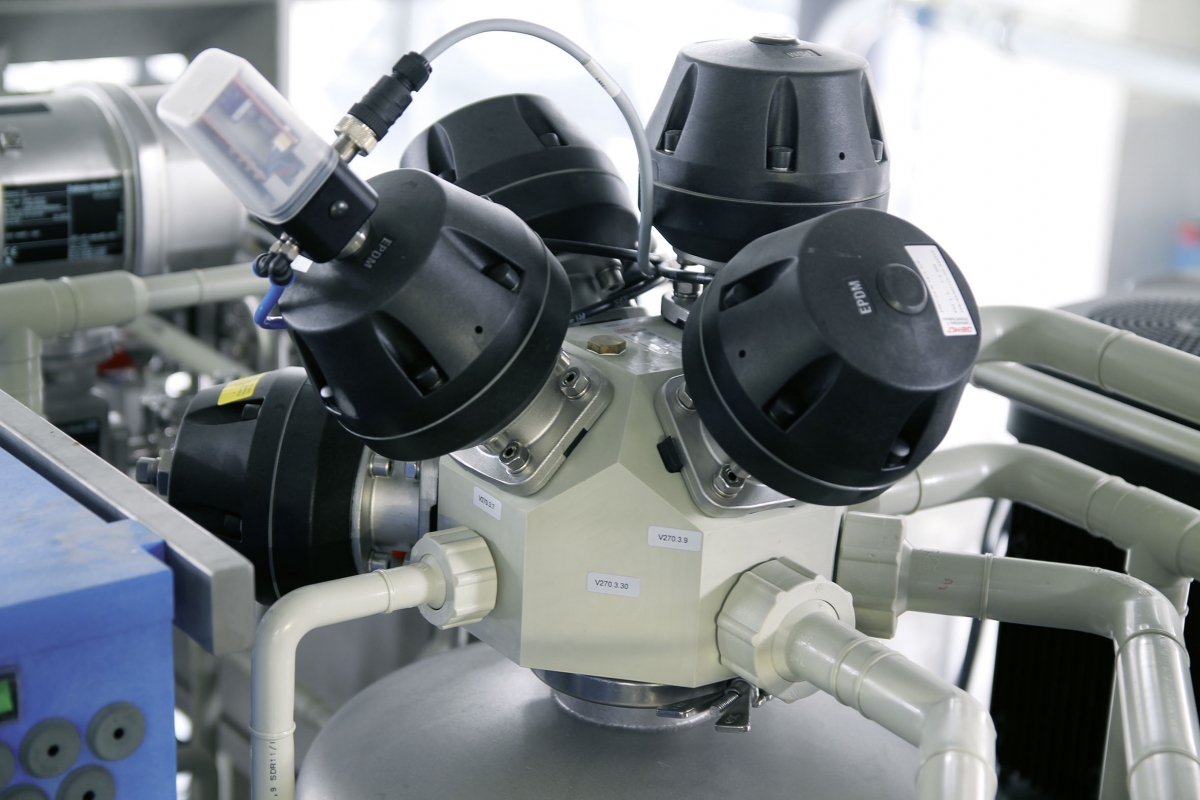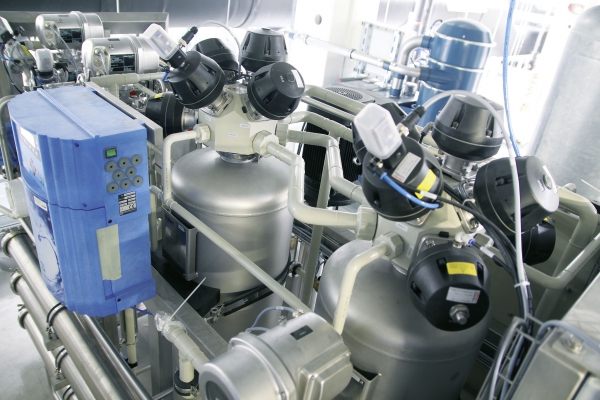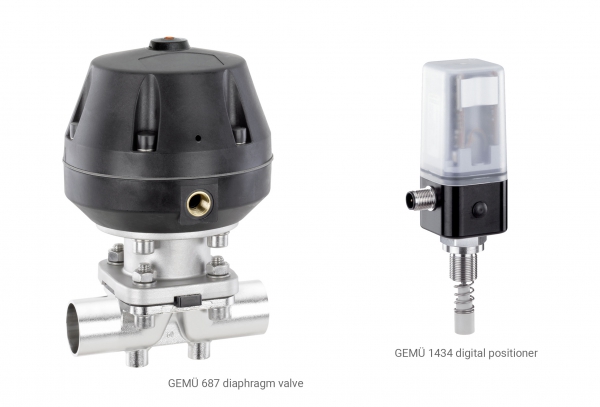GEMÜ Valves: Multi-port Valve Blocks - Generation of Ultra-pure Water
Ion Exchanger, Reverse Osmosis and Electrodeionization

Figure 1 - GEMÜ plastic multi-port valve block (M-Block)

Figure 2 - Ion exchanger with GEMÜ plastic M-blocks

Figure 3 - GEMÜ 687 diaphragm valve and GEMÜ 1434 digital positioner
Did you know that GEMÜ designs and manufactures plastic multi-port valve blocks (M-Blocks) at their facility in Germany to add to their expanding Industrial product offering? M-Blocks make it possible to build significantly more compact systems as they require a smaller number of pipework/fittings and connections. This leads to faster installation time and reduce both potential leakage points and deadleg. All these benefits significantly contribute to increase plant reliability cost optimization and efficiency of the plant.
Generation of ultra-pure water
Combining the subprocesses of softening by ion exchange, reverse osmosis and electrodeionization is considered today to be an established procedure for generating pure and ultra-pure water.
Softening
Softening is effected by means of an ion exchange process consisting of two softening filters arranged in series connection. For softening, the feed water flows through the filter containers from top to bottom with the hardness components (calcium and magnesium ions) being replaced by sodium ions.
Reverse osmosis (RO)
In downstream reverse osmosis, the soft water is desalinated. With this diaphragm separation process, the soft water is fed to the permeators (membrane carriers) under high-pressure. While retaining the contained salts and organic ingredients, approximately 75% of the water leaves the permeators as permeate. After reverse osmosis, the residual salt content is less than 2% of the feed water salt content.
Electrodeionization (EDI)
For residual desalination, the generated permeate then goes to the electrodeionization modules. This procedure combines the membrane separation process and ion exchange. The modules comprise two chambers with the pure water chamber being filled with a special ion exchange resin. The system consists of cation- and anion-permeable membranes. When flowing through the pure water chamber, the system almost completely removes the ions that are still located in the permeate. The draining diluate is fed into the ultra-pure water storage tank.
Principle of operation of the multi-port valve block
The block combines virtually all the diaphragm valves that are attached in the conventional ion exchanger design upstream of the two softening filters into one unit. This unit is attached as a multi-port valve block above the softening filters and constitutes the main part of the plant.
With all the softening subprocesses, all the media currents are routed via the block: the feed water, the pure water and the regeneration agents. The feed water and pure water currents are always kept separate from one another. This is a reliable way to prevent a short-circuit current, i.e. non-softened water from getting to reverse osmosis. The multi-port valve block also safely regulates the switchover process – if a softening filter is switched over from service to regeneration or vice versa. The two multi-port valve blocks make it possible to change over the water softening column for operating mode 1-2 or, if required, 2-1.
For more information, click here.
Tel: 01925 824044
Email: enquiries@gemu.co.uk
Web: www.gemu.co.uk

| Telephone: | 01925 824044 |
| Email: | sales@gemu.co.uk |
| Website: | www.gemu.co.uk |
| More information on the Gemu Valves Ltd BVAA Member Directory Page |
Search related valve / actuator articles: Gemu Valves LtdIssue 65Diaphragm Valves / Pinch Valves







-web.jpg)





